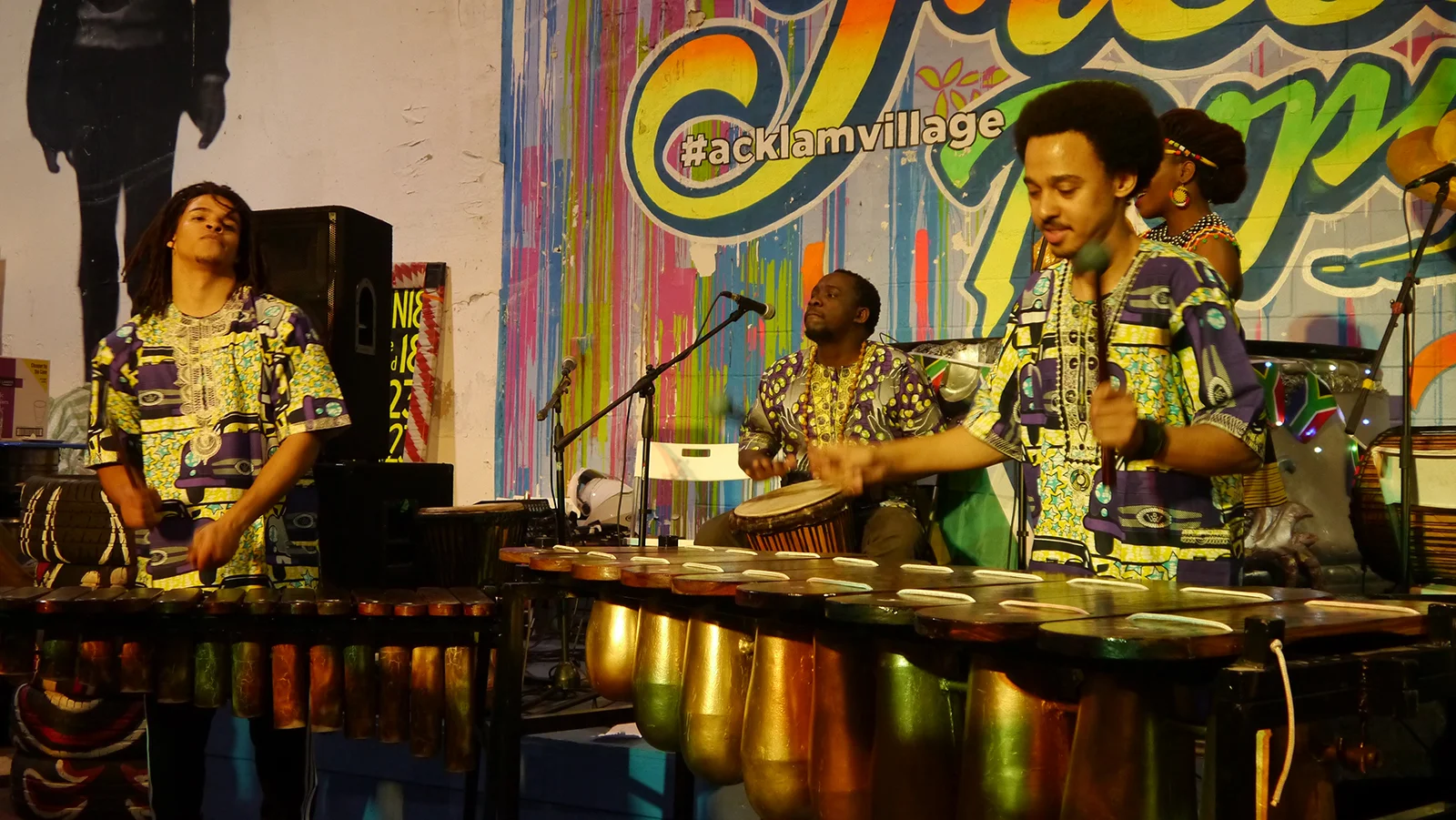the marimba of southern africa
Background
In 1961, Robert Sibson established the Kwanongoma College of African Music in Bulawayo, Zimbabwe, which was to specialise in African music and teacher training in order to safeguard and promote the African music traditions of the people of Zimbabwe.
Sibson proposed for there to be an African instrument that could be used for instruction. After extensive consultation, it was decided that this instrument would be the marimba – a uniquely African instrument that wasn’t specifically linked to any indigenous group in Zimbabwe itself.
Development of the Zimbabwean marimba
Kwanongoma’s first marimbas were built by Nelson Jones in 1962, but these instruments didn’t work very well as the wood he used was far too soft. In the following year, Josiah Siyembe Mathe joined the college and began constructing marimbas based on the Selimba, an instrument used by the Lozi people of southwest Zambia. His Selimba was an 11-key instrument with gourd resonators, and from this he constructed a 13-key soprano, a tenor and a bass. He used Mukwa (Pterocarpus angolensis) for the keys, and eventually adopted PVC piping for the resonators, having tried bamboo unsuccessfully.
In 1966, Michael Bhule, Mathe’s successor, eventually built the first complete set of four as we know Kwanongoma marimba sets to be today – based on input from Alport Mhlanga, who had become a marimba instructor at the college that year. The set consisted of a soprano and a tenor in diatonic C-scale with added F#’s, a 9-key baritone, and an 8-key bass.
As the marimba had no inherent musical traditions, Mhlanga’s immediate task was to develop the musical repertoire of the instrument – and began composing as well as arranging traditional and contemporary songs on the marimbas which many bands around the world still play and perform today.
Zimbabwean Marimbas today
Out of the pioneering work done at Kwanongoma arose three main types of Zimbabwean marimbas that we find today. Dumisani Maraire exported the early build with him to the United States in 1968 – which continues to be built with wooden frames, but with adjustments to the build of the resonators as well as the size of the bass, which is much larger and louder.
The second type, which is probably the most commonly found type of marimba outside of the USA was refined to its current state by Olof Axelsson, Alport Mhlanga and Elliot Ndlovu in the 1970s. The build was made to look and sound more traditional by introducing rounded, fibreglass resonators on the baritone and bass, and giving the resonators on the tenors and soprano a bark-like finish, as well as decorating the wooden keys with burn patterns. Eventually, for durability purposes, the wooden frames were replaced with steel ones. This type of build is the most common you will find in Zimbabwe and Botswana.
The third type of marimba that came out of Kwanongoma was developed by Olof Axelsson, who was director of the college from 1972 to 1981. These marimbas, mostly played found in Sweden, USA and at Cyrene Mission in Zimbabwe, are based more closely on the Timbila of the Chopi people of Mozambique. The instruments are lightweight and, without stands, sit much lower on the ground, with aluminium resonators.
A fourth type of design was exported to the Cape in South Africa and has been embraced by many Xhosa groups. This design is now considered a South African style of marimba. These are usually in E-flat tuning, and the instruments have their resonators encolsed in a box-style design. Amampondo is one of the most famous marimba bands to come out of South Africa, having toured internationally with their band leader and founder, Dizu Plaatjies.
Marimba Around The World
What started in Bulawayo in the 1960s today resonates in many countries around Africa and the world at large. In Europe, there are marimba players, bands and teachers in Iceland, France, Germany, Norway, Sweden and of course here in the United Kingdom. Otto and the Mutapa Calling is one of the most active marimba bands in the UK - playing cultural music from Zimbabwe, South Africa and Botswana.
Find out more about playing the marimba in the UK, or get in touch below!
Sources:
Minaar-Bailey, M. (2007). History of Zimbabwean Marimbas. Chaia Marimba Music Book 2, pg 15-20.
The Zimbabwean Marimba of Alport Mhlanga (2000), DVD, Canada
Hwamanda Dance Troupe, Zimbabwe, 2006. This is a typical set up with one soprano, one tenor and one baritone marimba.
Zimba Marimba Band with Tipei Marazanye at the College of Music in Harare, Zimbabwe, 2006. Larger bands typically use three or four sopranos, three or four tenors with up to two people on each, one or two baritones, and one bass marimba.
Venancio Mbande performing with his Timbila group in Mozambique, 2006. The Timbila of the Chopi people was the blueprint for the marimbas designed by Olof Axelsson in the 1980s.
Zimba Marimba Band, Sweden, 2006. The band, led by Peta Axelsson, plays on Olof Axelsson's Chopi-style marimbas.





